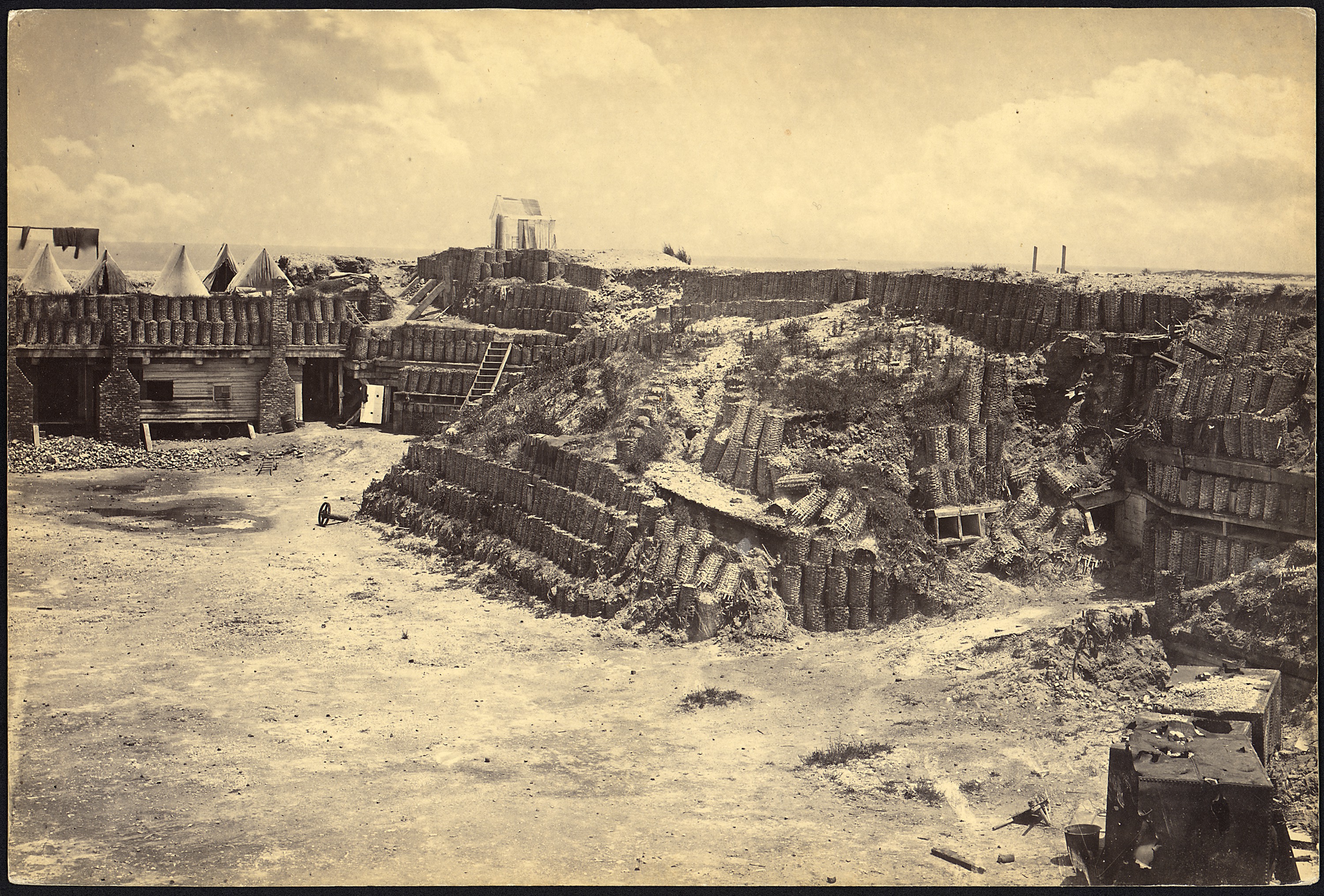 |
| Interior, Fort Sumter |
HDQRS. DEPT. SOUTH CAROLINA, GEORGIA, AND FLORIDA, Charleston, S. C., February 8, 1863.
Brigadier General R. S. RIPLEY,
Commanding First Military District, Charleston, S. C.:
GENERAL: The recent attack of the enemy's iron-clad monitor Montauk on the battery at Genesis Point (the first day at about 1 mile and the second at about 800 or 1,000 yards) would seem to indicate that the enemy is not so confident of the invulnerability of this kind of naval vessel; but I conclude also that the attack on Sumter, whenever it takes place, will probably be made at long range with their heaviest guns and mortars. This being admitted, they will necessarily attack it where it is weakest-i. e., the gorge, southeast angle, and east face-taking their position close along the eastern shore of Morris Island, after having silenced Battery Wagner. By adopting this plan their steamers, gunboats, &c., would be, farther removed from the batteries of Sullivan's Island. The enemy may also establish sand rifled and mortar batteries on the sand hills along the sea-shore of Morris Island at the distance of from 1 to 2 miles form Sumter, as was done in the reduction of Fort Pulaski last year. He might possibly send one or more monitors during the night to take a position in the small channel north of Cummings Point, within close range, to batter down the gorge of Sumter and endeavor to blow up the magazines. That mode of attack being the one most to be apprehended should be guarded against, as well as our limited means will permit, first by transferring as many heavy rifled guns as can be spared from the other faces of the fort to the gorge angle and face already referred to, and the Brooke rifled gun, now on its way here from Richmond, must likewise be put there, substituting in its place at Fort Johnson the 10-inch now expected from that city, so locating it as to fire toward Morris Island when required; secondly, a strong field work should be thrown up (as soon as sufficient labor be procured) on Cummings Point, open in the gorge toward Fort Sumter, to act besides as a kind of traverse to this work from the fire of the batteries located by the enemy along the sea-shore of Morris Island. The Cummings Point Battery should be armed with the heaviest and longest-range guns we may be able to obtain for that purpose.
The introduction of heavy rifled guns and iron-clad steamers in the attack of masonry forts has greatly changed the condition of the problem applicable to Fort Sumter when it was built, and we must now use the few and imperfect means at our command to increase its defensive features as far as practicable. The chief engineers of this department and of the State will be ordered to report to you at once to confer with you, so as to carry out the views expressed by me in this letter.
Major Harris, chief engineer, has received my instructions relative to locating some Rains torpedoes about Cummings Point and within the harbor, independently of the electrical torpedoes under the charge of Mr. Waldron.
Respectfully, your obedient servant,
G. T. BEAUREGARD,
General, Commanding.
Official Records, Series I., Vol. 14, Part 1, Page 770.
The Confederates were now in the position of defending Fort Sumter, and were finding it no easy task. After the reduction Fort Pulaski it was firmly established that artillery could breach the walls of even the most modern of forts. But at Fort McAlister (Genesis Point) near Savannah, the lesson learned was that sand and debris was often as effect as masonry at stopping shot. Although Fort Sumter would be battered throughout the war, the wreckage of the battering was often used to assist in protecting the fort's defenders. In April the Federal fleet under DuPont would attempt to run the battery, but was deterred by obstructions placed in the harbor.
No comments:
Post a Comment